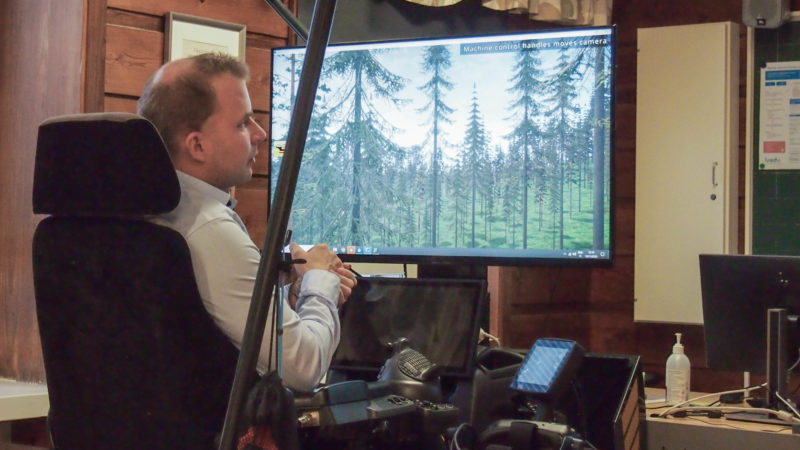Digital twin of forest enters classrooms – new technology assists in instruction on more diversified forest management

When a harvester simulator has access to the growing stock data on a real forest stand, students learn not only how to operate the harvester, but also to manage forests in a more ecological and diversified way.
The combination of harvester simulator and a digital twin of forest creates a completely new kind of learning environment, says Professor Jori Uusitalo of the University of Helsinki.
The digital twin enables an increasingly comprehensive modelling of forest and predictions of how the forest will develop. During the simulator training, harvester operators learn not only about the technology of the harvester, but also to pay attention to the specific features of each site.
In particular, the new learning environment will help teachers to emphasise diversified and ecological forest management.
Understanding of the significance of forest biodiversity has progressed considerably in the past few years. Also, more attention must be paid to climate change in harvesting operations.
’Understanding of the significance of forest biodiversity has progressed considerably in the past few years. Also, more attention must be paid to climate change in harvesting operations,’ Uusitalo points out.
The digital twin used for training was created with the help of three real-life stands. On the simulator screen, the trees appear with precisely the same height and thickness as in the forest. The tree species and their locations also correspond to reality. The twin shows both living trees and dead and decaying wood, which is important for biodiversity.
’To identify species and determine tree locations, we have used drone imaging and a method based on deep learning developed at the University of Helsinki,’ Uusitalo says.
Towards targeted harvesting
The forest digital twin was linked with the harvester simulator in the Luomuhakkuu [Organic Harvest] project. The aim of the three-year research project is to develop methods which will enable harvesting to take better account of specific natural features.
The aim is to bring decision-making about which tree to fell and which management method to use down to the micro compartment level. The method, named ‘Targeted Harvesting’, is also being studied under the auspices of the Chair of Forest Technology and Wood Procurement at the University of Helsinki, which initiated the project.
The digital twin enriches the simulator training enormously and brings it to a completely new level. It provides a genuine experience of how to carry out targeted harvesting.
In addition to the University of Helsinki, the Luomuhakkuu project partners include the Arbonaut and Ponsse companies and the Tampere Vocational College Tredu. The college offers education leading to the basic and special vocational qualifications of harvester operator.
‘The digital twin enriches the simulator training enormously and brings it to a completely new level. It provides a genuine experience of how to carry out targeted harvesting,’ says lecturer Janne Ruokonen at Tredu on a video that shows him thinning a pine stand to improve its resilience during climate change.
The video [in Finnish] demonstrates the cooperation of the forest digital twin and the simulator. The view on the simulator screen corresponds exactly to the view from the harvester cabin. In the foreground is the harvester’s felling head, steered by the operator and giving a very realistic impression of felling, delimbing and cutting the trees selected.
The realistic impression is enhanced by VR goggles. The map application contains a map of the terrain, but also, for example, information on how best to move about on the site and the occurrence of broadleaves on it. The lighting conditions can also be varied to simulate an operation in the autumn or at night.
Read more: Drones help locate and spare nesting trees of raptors
Read more: Wood-based battery can triple charging speed of car batteries